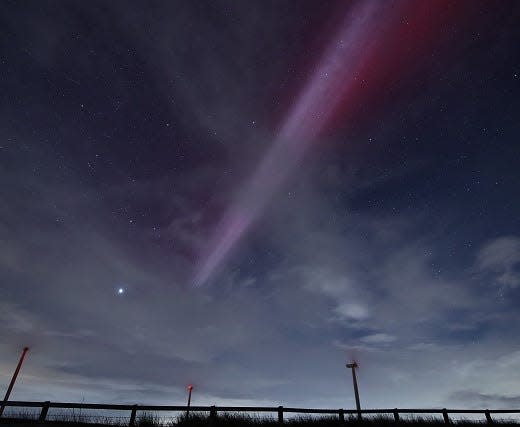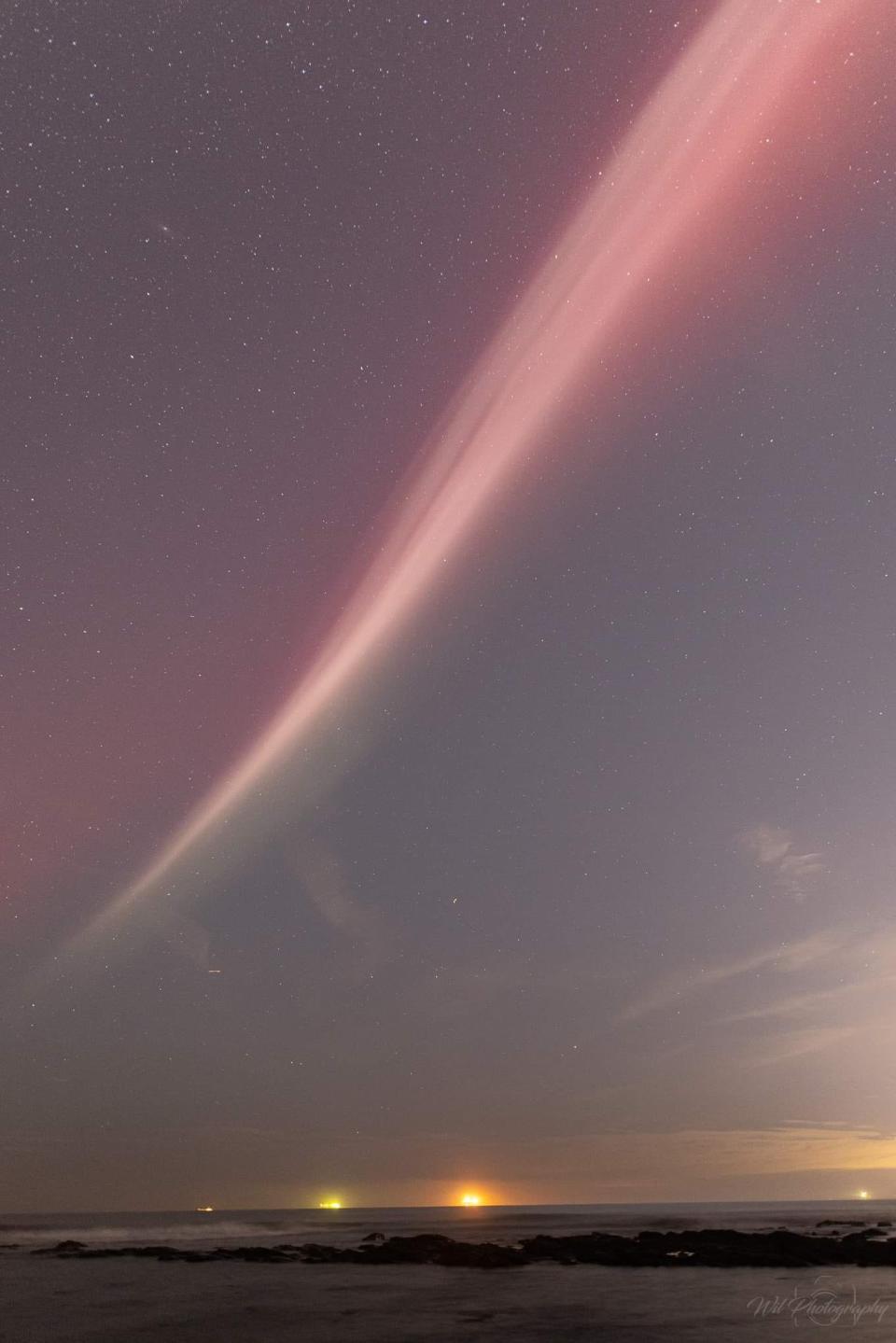It looks like the northern lights, but it's something different. It's called 'STEVE.'

Strange phenomena appeared in the skies over the United Kingdom on Sunday night. Known as "STEVE," the spectacle often accompanies the aurora.
Only recently identified, the lights are referred to as "Strong Thermal Emission Velocity Enhancement (STEVE), and are a phenomenon similar to their more well-known cousins aurora borealis and australis," the National Oceanic and Atmospheric Administration said.
Indeed, according to SpaceWeather.com, "STEVE is a recent discovery. It looks like an aurora, but it is not. The soft purple glow is caused by hot (5400 degrees F) rivers of gas flowing through Earth’s magnetosphere at speeds exceeding 13,000 mph. These rivers are energized by strong geomagnetic storms like the one that happened over the weekend."
While the colorful lights of an aurora normally ripple horizontally across the sky, STEVEs form a distinctive purplish or greenish vertical streak, according to Space.com.
STEVEs were only rarely documented before the explosion of smartphone cameras and social media, said University of Calgary astronomer Eric Donovan.
Aurora lovers, rejoice. 2024 could be a great year for northern lights, due to solar maximum
'Utter amazement. ... It was STEVE!'
"To our utter amazement we observed a striking phenomenon," reported Martin McKenna of Swatragh, Northern Ireland, on SpaceWeather.com. "It was STEVE!"
That photo can be seen at the top of this page.
"We were blown away by the intensity of the purple beam," continued McKenna. "We could see it plainly with the naked eye, swelling and flickering in brilliance with delicate structures like those seen within a feather. My mate Conor likened it to a celestial funnel cloud or tornado changing form in real time."

Another photographer, Wil Cheung of Whitley Bay, England, also photographed the unusual spectacle Sunday night.
"It lasted for more than an hour," marveled Cheung. "Strong auroras danced in the north while STEVE flowed through the sky to my south."
STEVE is a 'backronym'
The word STEVE is a "backronym," where words are matched to an abbreviation already in use.
The name Steve originally came from a mid-2010s Facebook group, which decided to put a name to the mystery sky feature. It's a reference to the children's movie Over the Hedge, where the characters use the name to refer to something they weren't sure about, according to the Australia Broadcasting Corporation.
Scientists later backronymed STEVE to the rather unwieldy "Strong Thermal Emission Velocity Enhancement."
2024 could be good year for auroras – and maybe STEVEs
The solar forces that produce auroras are predicted to peak next year and at a more intense level than previously thought, forecasters from NOAA's Space Weather Prediction Center announced in October.
For centuries, the aurora borealis, aka the northern lights, has fascinated people. It forms when particles of electrons and protons from space collide with the Earth's magnetic field. The particles then interact with molecules of atmospheric gases to cause the famed glowing red and green colors of the aurora.
The lights are visible in both the far northern and southern parts of the world. The southern lights are known as aurora australis.
While auroras are caused by electrons and protons, STEVEs, which were first officially identified in 2018, are caused by ribbons of hot gases.
According to The Washington Post, since "solar activity is expected to be on the rise over the next few years, researchers say, so there could be good opportunities for the public to spot STEVE."
Here's your space weather forecast: Why feds are warning about solar storms headed for Earth
This article originally appeared on USA TODAY: Strange sky phenomena called Steve appeared over the UK on Sunday

